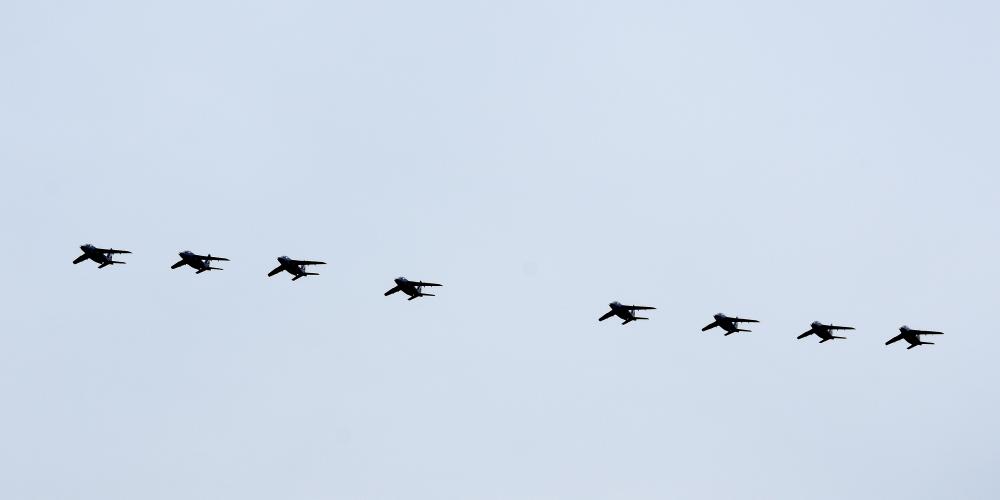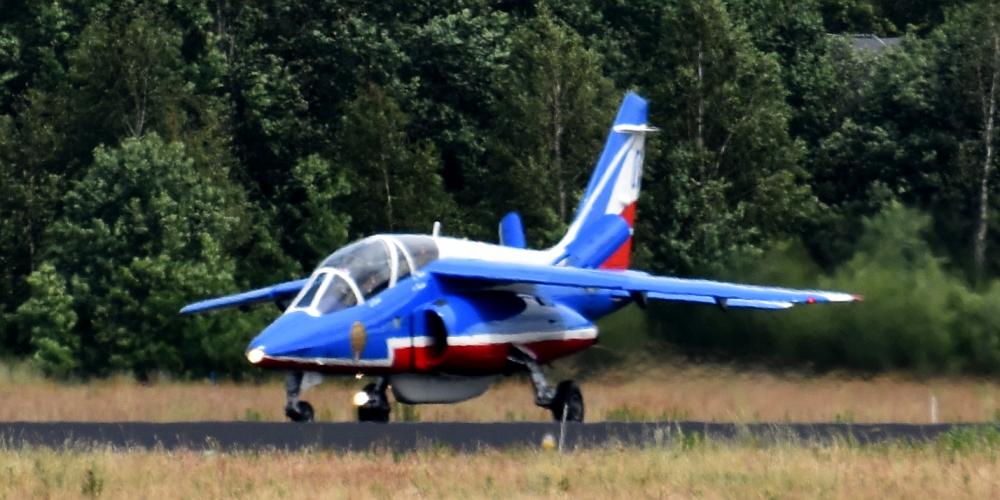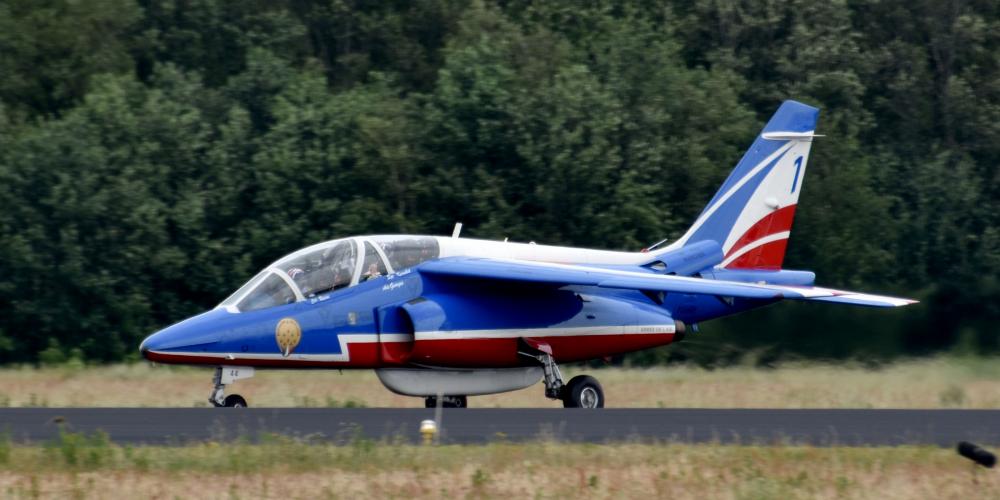|
|
Dassault/Dornier
In the early 1960s, European air forces began to consider their requirements for the coming decades. One such area of consideration was the requirement for a new generation of jet-powered trainer aircraft to replace such aircraft as the US-built Lockheed T-33 Shooting Star and French-built Fouga Magister.
Britain and France established a collaborative program to pursue development of what was initially intended to become a supersonic jet aircraft. This aircraft was to be produced in two distinct variants for different roles: trainer and light attack aircraft. The result of this collaboration, the SEPECAT Jaguar, proved to be an excellent aircraft, but its definition had changed in the interim, and the type emerged as a full-sized, nuclear-capable strike fighter, whose two-seat variants were used for operational conversion to the type. As such, the Jaguar was not well suited for the general training mission.
As result of this outcome, in 1967, France entered into a series of discussions with West Germany on the topic of a prospective collaboration effort to meet this demand in 1967. West Germany was keen to participate in such talks, having long held an interest in conducting joint training operations with France along with a desire for strengthening positive political relations between the two nations. France also valued military cooperation with West Germany, wanting to break a perceived German ideological preference for American aircraft. In 1968, a joint specification was produced out of these talks. One substantial change to the requirements was that the sought trainer was now specified to be subsonic, supersonic trainer aircraft having proven to be superfluous to practical requirements. In July 1969, a joint development and production agreement was signed between West Germany and France; under the terms of this agreement, the two nations committed to purchasing 200 aircraft, these being domestically assembled in each of their own countries.
At one point, both the German government and the German Air Force had been keen to relocate pilot training activities from the United States to France as part of the project. In 1971, however, this was abandoned over fears of a hostile US reaction and West Germany's offset obligations to the United States making such a move unpalatable. While the joint Franco-German training proposal was abandoned, the German government felt obligated to proceed with the aircraft program; at the time, Germany did not require a new trainer aircraft, but it did have a need for a replacement for its fleet of Fiat G.91 attack aircraft. Accordingly, Germany proposed that the aircraft be built in two distinct versions, as an inexpensive trainer for the French requirement, and as a close air support platform for the German requirement; this position was accepted by France. An initial point of contention whether to use a French or American powerplant for the aircraft was also settled, with France agreeing to solely finance the development of the French-built Larzac engine while Germany agreed to adopt the same powerplant.
A total of three groups of manufacturers produced proposals in response to the requirement. Dassault, Breguet and Dornier submitted the "TA501", which had been developed through a merger of the Breguet 126 and Dornier P.375 concepts, VFW-Fokker submitted their "VFT-291" aircraft, while SNIAS/MBB submitted the "E.650 Eurotrainer". Each of these proposals were to be powered by twin SNECMA Turbomeca Larzac turbofan engines. The German Air Force had insisted that the trainer have two engines after having suffered from severe aircraft attrition rates due to the high accident rate of the single-engine Lockheed F-104 Starfighter.
On 23 July 1970, the Breguet-Dassault-Dornier TA501 was declared the winner of the competition. In February 1971, the project definition phase was formally completed and the integrated design team was formally set up at Saint-Cloud, Paris, France; that same month, a join Franco-German protocol was signed, launching the construction of four prototypes. In February 1972, the approval to proceed with full development was issued. In May 1972, the first project meeting was held in Bordeaux, at which the order for the four prototypes was formally placed. By November 1972, the project had passed its first mock-up review. Dassault was designated as the "pilot" company for the project and possessed final authority on design and management decisions, this approach to project management has been claimed to have been a mostly efficient manner of running the program.
Two prototypes were to be built by Dassault in France (Dassault having bought out Breguet in the meantime) and a further two were to be built by Dornier in Germany. On 26 October 1973, the first French prototype performed its first flight at Istres, Marseille; on 9 January 1974, the first German prototype conducted its maiden flight from Oberpfaffenhofen, Bavaria. The remaining two prototypes were in the air before the end of 1974. The first and second prototypes were used to explore the aircraft's flight envelope, the third prototype was fitted with the French trainer equipment fit and the fourth with the German close air support equipment. The prototypes were equipped with recording and telemetry equipment packages, allowing for instrumentation readings and other useful data to be received on the ground in real time during test flights.
Manufacture of Alpha Jet sub-assemblies was divided between France (Dassault), Germany (Dornier) and Belgium (SABCA), each country performing final assembly and checkout of the type in separate facilities. Dassault hosted the largest of these three assembly lines, typically producing 13 aircraft per month to meet the needs of French and export customers, it was reportedly capable of a maximum output of 15 Alpha Jets per month; the Dornier final assembly line typically maintained a maximum rate of six aircraft per month. In contrast to the final assembly arrangements, none of the three sources duplicated the manufacture of any component: Dassault-Breguet produced the front and center fuselage, Dornier constructed the wing, tail and rear fuselage, while SABCA manufactured the nose and flaps of the aircraft. A total of 4,500 people were employed in the manufacturing of the Alpha Jet in Germany, an equal number in France also worked on the programme.
Dassault/Dornier Alpha Jet
The Dassault/Dornier Alpha Jet is a light attack jet and advanced jet trainer designed and manufactured by Dassault Aviation of France and Dornier Flugzeugwerke of Germany. It was developed specifically to perform the trainer and light attack missions, as well as to perform these duties more ideally than the first generation of jet trainers that preceded it. Following a competition, a design submitted by a team comprising Breguet Aviation, Dassault Aviation, and Dornier Flugzeugwerke, initially designated as the TA501, was selected and subsequently produced as the Alpha Jet.
On 26 October 1973, the first French prototype performed its first flight at Istres, Marseille; on 9 January 1974, the first German prototype conducted its maiden flight from Oberpfaffenhofen, Bavaria. On 4 November 1977, the first production aircraft made its first flight. In September 1978, deliveries of production Alpha Jets formally commenced.

Dassault/Dornier Alpha Jet, Patrouille de France
Vliegbasis Volkel (UDE/EHVK), Uden, Netherlands, 13 June 2019

Dassault/Dornier Alpha Jet, registration F-TEMS, built ????, serial number E20
Vliegbasis Volkel (UDE/EHVK), Uden, Netherlands, 13 June 2019

Dassault/Dornier Alpha Jet, registration F-UHRE, built ????, serial number E44
Vliegbasis Volkel (UDE/EHVK), Uden, Netherlands, 13 June 2019

Dassault/Dornier Alpha Jet, registration F-TETD, built ????, serial number E113
Vliegbasis Volkel (UDE/EHVK), Uden, Netherlands, 13 June 2019
|



